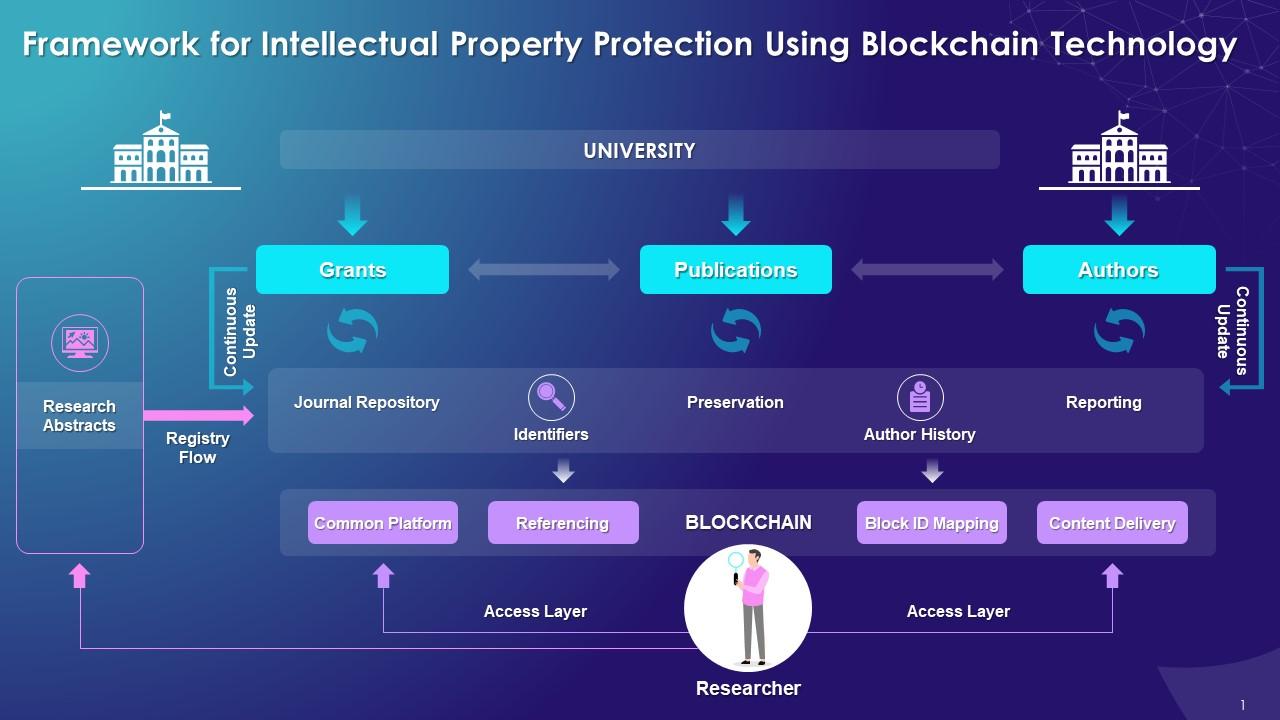The Role of Blockchain in Intellectual Property Protection

- Understanding the basics of blockchain technology
- Challenges in protecting intellectual property rights in the digital age
- How blockchain can revolutionize intellectual property protection
- Case studies of successful implementation of blockchain in IP protection
- Potential future developments in blockchain technology for IP protection
- The importance of collaboration between stakeholders in utilizing blockchain for IP protection
Understanding the basics of blockchain technology
Blockchain technology is a decentralized, distributed ledger system that securely records transactions across a network of computers. Each block in the chain contains a cryptographic hash of the previous block, timestamped transaction data, and a unique identifier. This structure ensures the integrity and immutability of the data stored on the blockchain.
One of the key features of blockchain technology is its transparency and traceability. All transactions are recorded on the blockchain in a transparent and tamper-proof manner, allowing for easy verification of ownership and provenance. This can be particularly useful in the protection of intellectual property rights, as it provides a secure and verifiable record of ownership.
Smart contracts are another important aspect of blockchain technology. These self-executing contracts are stored on the blockchain and automatically enforce the terms of an agreement when predefined conditions are met. Smart contracts can be used to manage intellectual property rights, ensuring that creators are fairly compensated for their work and that usage rights are respected.
Overall, blockchain technology has the potential to revolutionize intellectual property protection by providing a secure, transparent, and efficient way to manage and enforce rights. By leveraging the decentralized nature of blockchain networks, creators can protect their intellectual property from infringement and ensure that they receive proper recognition and compensation for their work.
Challenges in protecting intellectual property rights in the digital age
Protecting intellectual property rights in the digital age presents numerous challenges due to the ease of copying and distributing digital content. One of the main issues is the difficulty in tracking and proving ownership of digital assets, leading to an increase in intellectual property theft. Additionally, the global nature of the internet makes it challenging to enforce intellectual property laws across different jurisdictions.
Another challenge is the rise of online piracy and counterfeiting, which can significantly impact the revenue of creators and innovators. With the proliferation of peer-to-peer file sharing and torrent sites, it has become increasingly difficult to prevent unauthorized access to copyrighted material. This not only affects individual creators but also poses a threat to industries such as music, film, and publishing.
Furthermore, the lack of transparency in digital transactions makes it challenging to monitor and control the use of intellectual property. Without a secure and reliable system in place, creators risk losing control over their work and missing out on potential revenue streams. This is especially problematic for small businesses and independent artists who may not have the resources to protect their intellectual property effectively.
How blockchain can revolutionize intellectual property protection
Blockchain technology has the potential to revolutionize intellectual property protection by providing a secure and transparent way to record ownership rights. By utilizing blockchain, creators can establish a verifiable record of their work, making it easier to prove ownership and prevent unauthorized use.
One of the key benefits of blockchain in intellectual property protection is its ability to create an immutable ledger of transactions. This means that once a record is added to the blockchain, it cannot be altered or deleted, providing a high level of security and trust in the ownership of intellectual property.
Additionally, blockchain can streamline the process of licensing and royalty payments by automating smart contracts. These self-executing contracts can ensure that creators receive fair compensation for the use of their work, without the need for intermediaries.
Furthermore, blockchain technology can help in the fight against piracy and counterfeiting by enabling the tracking of intellectual property rights across the supply chain. This can help to identify and prevent unauthorized use of copyrighted material, protecting the interests of creators and rights holders.
In conclusion, blockchain has the potential to transform the way intellectual property is protected and managed. By providing a secure and transparent platform for recording ownership rights, blockchain technology can help creators safeguard their work and ensure fair compensation for its use.
Case studies of successful implementation of blockchain in IP protection
Several case studies have demonstrated the successful implementation of blockchain technology in intellectual property protection. These real-world examples showcase the effectiveness of blockchain in safeguarding intellectual property rights and preventing infringement. Here are some notable instances:
- Verisart: Verisart is a platform that uses blockchain to create secure certificates of authenticity for art pieces. By leveraging blockchain technology, Verisart ensures the provenance and ownership of artworks, reducing the risk of counterfeit or stolen art entering the market.
- Ascribe: Ascribe is another platform that utilizes blockchain to protect digital art and other creative works. Artists can register their creations on the blockchain, establishing a timestamped record of ownership that can be easily verified. This helps artists prove ownership and protect their intellectual property rights.
- KodakOne: KodakOne is a blockchain-based platform developed by Kodak to help photographers protect their images from unauthorized use. By registering their photos on the blockchain, photographers can track and license their work more efficiently, ensuring they receive proper compensation for their creations.
These case studies highlight the diverse applications of blockchain in intellectual property protection, ranging from traditional art to digital content. By leveraging the transparency, immutability, and security features of blockchain technology, these platforms have successfully addressed the challenges of IP protection in the digital age.
Potential future developments in blockchain technology for IP protection
One potential future development in blockchain technology for intellectual property (IP) protection is the use of smart contracts. Smart contracts are self-executing contracts with the terms of the agreement directly written into code. By utilizing smart contracts on a blockchain network, creators can establish ownership rights and automatically enforce licensing agreements without the need for intermediaries.
Another promising advancement is the integration of digital fingerprints or hashes into blockchain technology. This would allow creators to timestamp their work on the blockchain, providing irrefutable proof of ownership and creation date. By storing this information in a decentralized and immutable ledger, blockchain can help prevent copyright infringement and protect the integrity of intellectual property.
Furthermore, the implementation of decentralized identifiers (DIDs) on blockchain networks could revolutionize IP protection. DIDs are unique identifiers that enable individuals and entities to control their digital identities and establish trust relationships. By assigning DIDs to creators and their works, blockchain technology can enhance the security and authenticity of intellectual property rights.
Additionally, the development of blockchain-based registries for intellectual property assets could streamline the process of registering and managing IP rights. These registries would provide a transparent and tamper-proof record of ownership, making it easier for creators to license their work and enforce their rights. By leveraging blockchain technology, IP registries can enhance the efficiency and effectiveness of intellectual property protection mechanisms.
In conclusion, the potential future developments in blockchain technology for IP protection hold great promise for creators and innovators seeking to safeguard their intellectual property rights. By leveraging smart contracts, digital fingerprints, decentralized identifiers, and blockchain registries, individuals and entities can establish ownership, prove authenticity, and enforce rights in a secure and efficient manner. As blockchain continues to evolve, it is poised to become a powerful tool for protecting intellectual property in the digital age.
The importance of collaboration between stakeholders in utilizing blockchain for IP protection
Collaboration between stakeholders is crucial in leveraging blockchain technology for intellectual property (IP) protection. By bringing together various parties such as creators, rights holders, legal experts, and technology developers, a comprehensive approach to safeguarding IP rights can be established.
**Blockchain** offers a decentralized and transparent platform for recording and verifying IP ownership, ensuring that the information is secure and tamper-proof. However, to fully harness the potential of blockchain in IP protection, collaboration among stakeholders is essential.
Through collaboration, stakeholders can work together to address challenges such as interoperability, standardization, and regulatory compliance. By sharing knowledge and resources, stakeholders can develop **innovative** solutions that enhance the effectiveness of blockchain in protecting IP rights.
Furthermore, collaboration enables stakeholders to pool their expertise and resources to address emerging threats to IP rights, such as **counterfeiting** and piracy. By working together, stakeholders can develop proactive strategies to mitigate risks and protect the integrity of IP assets.
In conclusion, collaboration between stakeholders is key to maximizing the benefits of blockchain technology for IP protection. By fostering partnerships and sharing insights, stakeholders can create a robust ecosystem that safeguards IP rights and promotes **innovation** in the digital economy.



